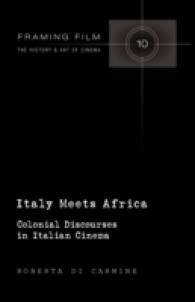- ホーム
- > 洋書
- > ドイツ書
- > Humanities, Arts & Music
- > History
- > antiquity
Description
(Short description)
(Text)
(Short description)
The volume presents some 300 inscriptions from a period of one millennium, from the 6th century BC to the 6th century AD which provide manifold insights into the history of the Oracle in Didyma, which was transformed into a Christian site after the end of the pagan cult. Numerous testimonia reflect the entire spectrum of the sanctury: detailed accounts of the building activities show the progress of the construction of the temple itself, inventories are evidence of the administration by Miletus, and dedications and oracle inscriptions document the communication with the God as well as the religious phenomena concerning the sanctuary as a place of worship also of other gods and godesses. Finally, the social structures of the milesian elite, to which the ministrants of Apollon and Artemis (prophetes, hydrophorai) belonged, are revealed by the reports of honours which they received and by their self-testimonies in the inscriptions through the centuries.
(Text)
This volume presents some 300 inscriptions, some of which are inedita from the Prussian excavations carried out until 1925, but the vast majority of which are new finds from the excavation activities resumed since 1962. They essentially cover a period of one millennium, from the 6th century BC to the 6th century AD, interrupted by a gap of about 170 years that occurred after the destruction of the sanctuary in the Ionian Revolt of 494 BC until its renaissance in the period of Alexander the Great. The new material, which documents in particular the Hellenistic era and the Roman imperial period, is not only a quantitative but also a qualitative addition to the Didyma inscriptions already recorded in the corpus by Albert Rehm from 1958. For example, the building reports contain new, detailed information for architectural research about the status of work on the temple of Apollo in the early 2nd century BC; the oracle inscriptions provide information for religious history about the increasing tendency of the sanctuary to become a Pantheon and a home for other cults as well. Finally, the numerous monuments erected by the representatives of the Apollo and Artemis cults, the Prophets and Hydrophors, as self-testimonies, give a contoured picture of the Milesian elite and its network. At the end of the long tradition and the drying up of the epigraphic tradition, there is a legal document from the time of Iustinian, which in its unique preservation and visualisation of writing can virtually be considered the queen of late antique epigraphy.








